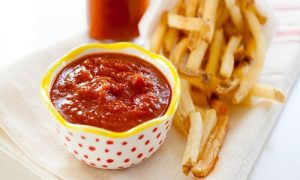The history of sauces
Sauce is one of the most popular seasonings for flavoring food. From hot, salty and sour sauces to sweet sauces, fish sauce made from fermented fish is popular in Thailand and Vietnam, while sauces made from ingredients like beans are popular all over the world. Sauces have different origins. From famous French sauces to Asian, English, Spanish, Italian and South American sauces. However, the base of all sauces consists of 5 mother sauces.
The role of sauces in the cuisine of different countries
Sauces play an important role in the preparation of food in different countries. For example, in England, meat sauce is considered traditional. which is usually consumed with grilled meat. It is possible to mention the type of apple and mint which are consumed with meat.
Ketchup and brown sauce are also mostly used with fast food. In France, sauces play an important role in the preparation of French dishes. French sauces are thickened using starch or flour sautéed in butter. In China, sauces are made from soybeans or fermented black beans with various oils. Southeast Asian people like Thailand and Vietnam also use sauces made from fermented fish.
In general, the sauce may be made thin or thick. Thin sauce is usually the same oil, vinegar or lemon juice plus a little salt and pepper, which is also called simple sauce. In thick sauce, ingredients such as tomato paste or other pastes, wheat flour, corn flour or starch and egg yolk are used to thicken the sauce.
sauce production process:
packing
All kinds of products must be packed in containers that are completely sealed and that air exchange is not done during storage and before opening. The following signs must be printed or labeled on each package in a legible font.
Product name and type
Name and address of the manufacturer (manufacturing factory)
Mention the name of the ingredients
Construction license number from the Ministry of Health
serial number
Date of manufacture to date, month and year
Expiration date
Storage conditions and net weight
Due to its high acidity, mayonnaise is resistant to microbial spoilage, but after opening it, it becomes very sensitive to oxidation and must be stored in the refrigerator.
Mayonnaise production method
To prepare mayonnaise, starch paste is first prepared in a pot, then water and starch paste are added to the mixer under vacuum and stirred, salt is added to the required amount and the mixture is stirred for one to two minutes. Then spices, sugar and lemon juice are added and stirred, after that, eggs and oil are added to the mixture. The step of adding oil is very sensitive, the oil should be added to the mixture gradually, the mixer should continue working for 4 minutes. Then the prepared mixture is pumped to the homogenizer for more uniformity.
The reason for using the mixture under vacuum is that the air that causes spoilage of the material is removed from the mixture. In the homogenizer, the materials become completely uniform and one phase, and then they are transferred to the filling device, and in the next step, they are packed and transferred to the cold storage. The noteworthy point is that emulsifier is used to suspend fat globules in water or water droplets in fat. Without emulsifier, mayonnaise becomes two separate phases of water and oil. Mayonnaise emulsion is strengthened by egg yolk

Salad dressing production method:
In order to produce it, first water, salt, sugar, lemon juice and eggs are poured into the mixer under vacuum and stirred, then the oil is gradually added to the mixture and after that the cooked starch is added to the mixture and the stirring continues. Finds. Mayonnaise, according to the formulation, is slowly added to the contents and finally spices are added to the mixture and the mixture is transferred to the homogenizer to make it uniform. After being homogenized, it is transferred to the filling machine, filled and packaged, and finally transferred to the cold storage. Mayonnaise does not need to be pasteurized due to its low acidity.
Ketchup production method:
To produce ketchup, raw tomatoes or paste are used. If raw tomatoes are used, they must be washed, crushed and concentrated, and after reaching the desired concentration, additives such as vinegar, onion powder, spice mixture, etc. are added. If the paste is used, there is no need to perform these steps.
Due to its high acidity, mayonnaise is resistant to microbial spoilage, but after opening it, it becomes very sensitive to oxidation and must be stored in the refrigerator. The paste is poured into the cooking tank and mixed with water, salt and onion powder, then the gum is mixed and dissolved with some water and sugar and slowly added to the mentioned mixture, at the end the spices are added to the formulation medicine and mixed then the mixture goes to the filling machine and is filled in special jars and passes through the pasteurizer tunnel for pasteurization and after labeling. It is packed in a carton and transported to the warehouse.
In the past, ketchup sauces were supplied in glass bottles, although glass bottles protected the sauce from moisture and oxidation, but they had certain problems that the sauce was difficult to get out of the glass. If the jar was not shaken well before consumption, the sauce would stick to the wall of the jar. Later, the problem of using glass bottles was solved with the production of polyethylene bottles that could be easily removed by pressing their bodies.

